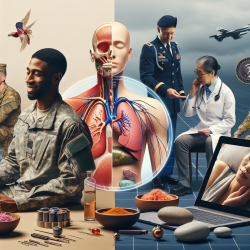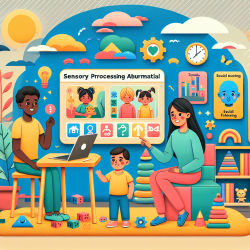Introduction
The integration of Complementary and Alternative Medicine (CAM) into conventional health care practices has been a topic of growing interest. A recent study titled "Health care utilization among complementary and alternative medicine users in a large military cohort" provides valuable insights into the utilization patterns of CAM within a military context. This study, conducted with participants from the Millennium Cohort Study, offers data-driven insights that can enhance the skills of practitioners, particularly those providing online therapy services to schools, such as TinyEYE.
Understanding CAM Utilization
The study reveals that CAM users tend to have higher health care utilization rates compared to non-CAM users. Specifically, CAM users accounted for 45.1% of outpatient care and 44.8% of inpatient care among the cohort. These findings suggest that CAM users report more health conditions and symptoms, which may drive their increased utilization of medical services.
Practitioners can leverage these insights to tailor their approaches when working with CAM users. Understanding that CAM users may have more complex health profiles can guide practitioners in developing comprehensive care plans that integrate both conventional and alternative therapies.
Key Findings and Implications for Practitioners
- CAM users are 15% more likely to report one or more health conditions compared to non-CAM users.
- The mean number of days receiving outpatient care was higher for CAM users (7.0 days) compared to non-CAM users (5.9 days).
- CAM users were more likely to have outpatient visits for musculoskeletal diseases, mental disorders, and injuries.
These findings highlight the importance of a holistic approach to health care, where practitioners consider both the physical and mental health needs of CAM users. By recognizing the potential for increased health care needs, practitioners can be proactive in addressing the comprehensive needs of their clients.
Encouraging Further Research
While the study provides valuable insights, it also raises questions about the reasons behind the higher utilization rates among CAM users. Practitioners are encouraged to delve deeper into understanding the motivations and circumstances that lead individuals to choose CAM therapies. Such research can enhance the integration of CAM into conventional health care practices, ultimately leading to improved outcomes for clients.
Conclusion
Incorporating the findings from this study into practice can enhance the effectiveness of therapy services, particularly for practitioners working with military populations or in settings where CAM is prevalent. By understanding the unique needs of CAM users, practitioners can provide more personalized and effective care.
To read the original research paper, please follow this link: Health care utilization among complementary and alternative medicine users in a large military cohort.










